Landscape Fabric to Control Weeds to drainage solutions
in this article you will explore the basics of how and where to use landscape fabric the right way in your Calgary landscape applications
Landscape fabric presents itself as an enticing solution for thwarting weed growth in your garden. Its durability, versatility in sizing, and cost-effectiveness make it an appealing choice for many homeowners. Yet, despite its widespread use, the proper application of this fabric remains a mystery to many. Understanding the optimal methods for deploying landscape fabric, along with essential upkeep practices, is crucial. Often referred to as weed barrier or weed control fabric, landscape fabric serves to deter weed growth while facilitating moisture movement within the soil. However, it's vital to recognize that it doesn't offer a permanent fix to weed proliferation—nature has its way of persevering. Even with landscape fabric in place, periodic weeding remains a necessary task. If landscape fabric doesn't align with your specific needs, exploring alternative drainage solutions becomes imperative.
What Is Landscape Fabric?
Landscape fabric serves as a physical barrier between the soil and the surface you're working on, typically made from durable polypropylene fabric used in industrial applications. There are two main types: Non-Woven and Woven.
Non-Woven Landscaping Fabric:
Non-woven geotextile fabric acts as a solid ground cover without perforated holes, suitable for soil stabilization but reducing permeability.
Woven Landscaping Fabric:
Woven geotextile fabric, made from finely laced threads of polypropylene fabric, allows water and soil nutrients to permeate easily, making it ideal for use around trees and shrubs.
Installation Landscape Fabrics Calgary?
When Should You Use Landscape Fabrics?
Parking Areas: Whether for a DIY parking pad or gravel driveway, landscape fabric provides a stable foundation, capable of withstanding vehicle weight.
Barns & Stables: Around barns and horse arenas, landscape fabric helps maintain stable ground, minimizing risks to livestock.
French Drains: Perforated landscape fabrics protect drains while allowing water flow, ideal for French drain installations.
Small Structures: Under sheds or storage units, landscape fabric creates a stable base, ensuring longevity even in adverse weather.
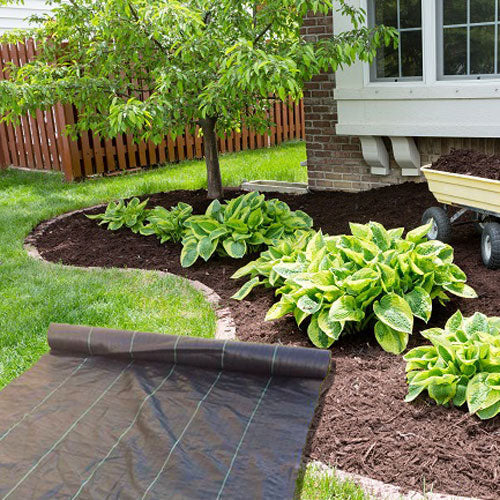
Which fabric is suitable for drainage purposes?
Opt for 4 to 6 ounce weight non-woven Drainage Fabric.
fabric for FRENCH DRAIN in clay soil
These fabrics are widely preferred for lining French drains due to their excellent flow-through rates and durability, ensuring longevity for the drain system. Ultra-thick rip rap fabric (8 oz +) is better suited for erosion control purposes rather than for French drains.
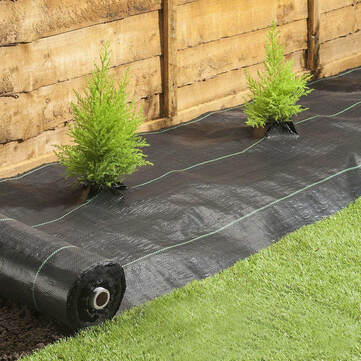
Is landscape fabric the same as drainage fabric?
Textile in Landscaping vs. Drainage Fabric. Textile fabric/landscape cloth serves the purpose of allowing water to permeate through in landscaping projects. Drainage fabric, on the other hand, is utilized in septic drain fields to function as a filtration system. Both materials function as barriers, belonging to the synthetic textile category, and share similarities in their composition.
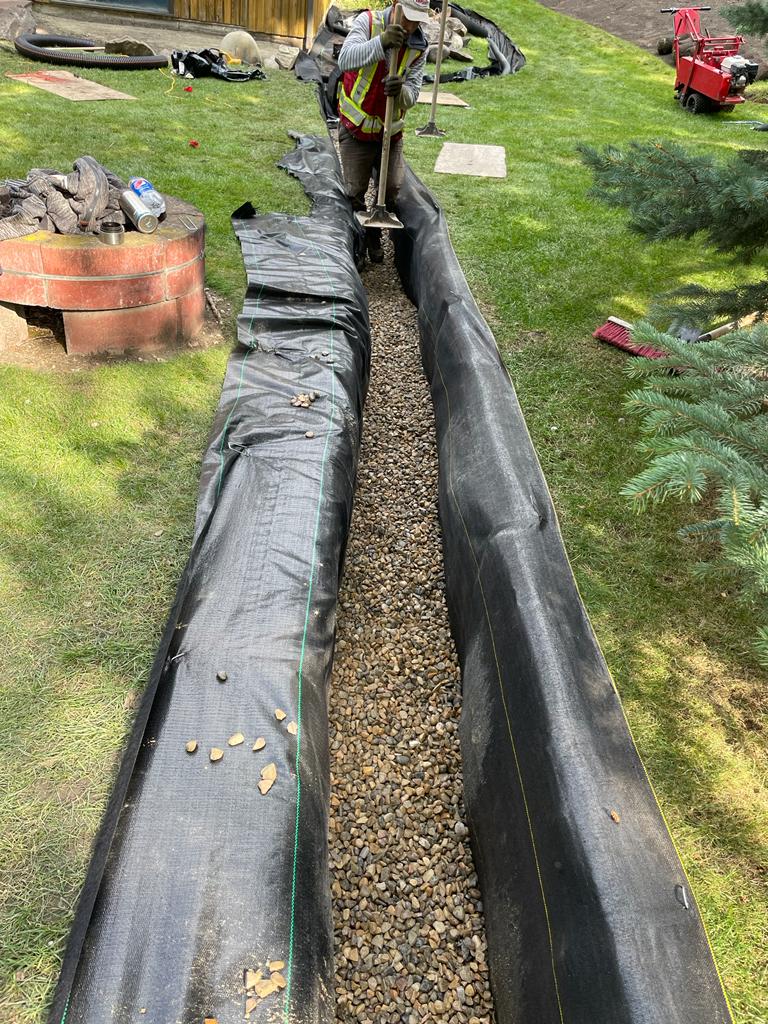
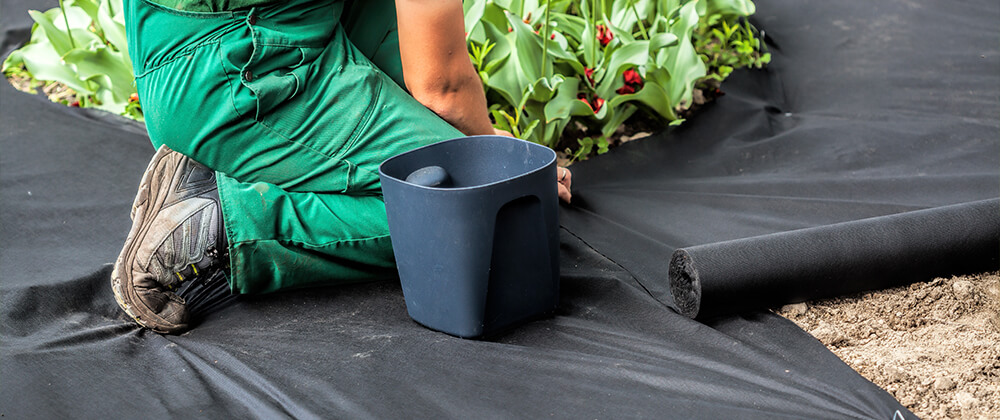
Is landscape fabric suitable for drainage purposes?
Which Geotextile Landscape Fabric is Ideal for Drainage Needs...
best fabric for French drain in clay soil
Both needle-punched and poly-spun variations of non-woven geotextile fabric facilitate seamless water flow and offer durability and adaptability for landscaping drainage applications.
FRENCH drain filter fabric
Non-woven geotextile fabric is frequently employed as a landscaping material to ensure efficient drainage, filtration, and stabilization of the ground.
What is another term for landscape fabric?
Exploring Various Landscape Fabrics and Their Applications
Weed block fabric
Landscape fabric, commonly referred to as garden fabric, weed block fabric, landscaping fabric, weed control fabric, or weed barrier fabric, is typically crafted from materials such as linen, polyester, polypropylene, or recycled materials.
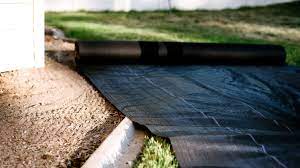
Various Types of Landscape Fabric
There are four primary types of landscape fabric: woven, non-woven, spun, and perforated fabric.
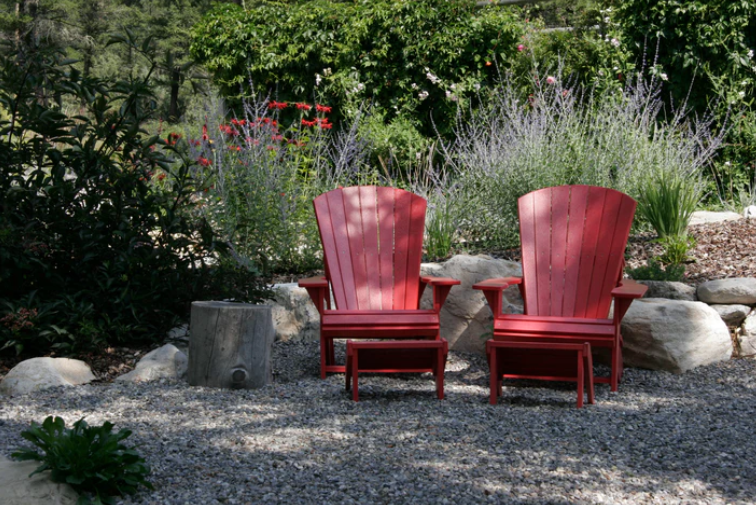
- Woven: Woven landscape fabric is typically crafted from woven linen or polypropylene. It features small pores that facilitate the passage of water, nutrients, and air into the soil. Ideal for use around trees and shrubs to suppress weed growth.
- Non-woven: Non-woven landscape fabric is a solid sheet of material usually composed of polyester or polypropylene. While it allows some water movement, it is not as permeable as other types of landscape fabric. Best suited for placement beneath rock mulches or pathways to minimize the risk of suffocating plants in flower or vegetable gardens.
- Spun: Spun landscape fabric, a type of non-woven fabric, is made from long polyester fibers. Thick spun fabrics are particularly suitable for use under gravel mulches and pathways, offering strength and durability. They can also be utilized behind retaining walls to deter plant roots and prevent soil seepage.
- Perforated: Perforated landscape fabric features small holes and is a lightweight option ideal for areas with minimal foot traffic and frequent plant changes. It is particularly effective in vegetable gardens or flower beds, as the perforations enable water, oxygen, and nutrients to penetrate the soil while still inhibiting weed growth.
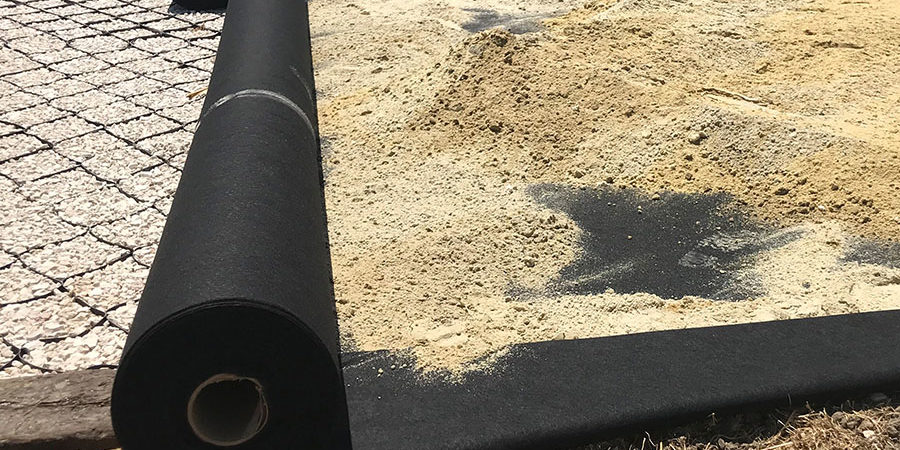
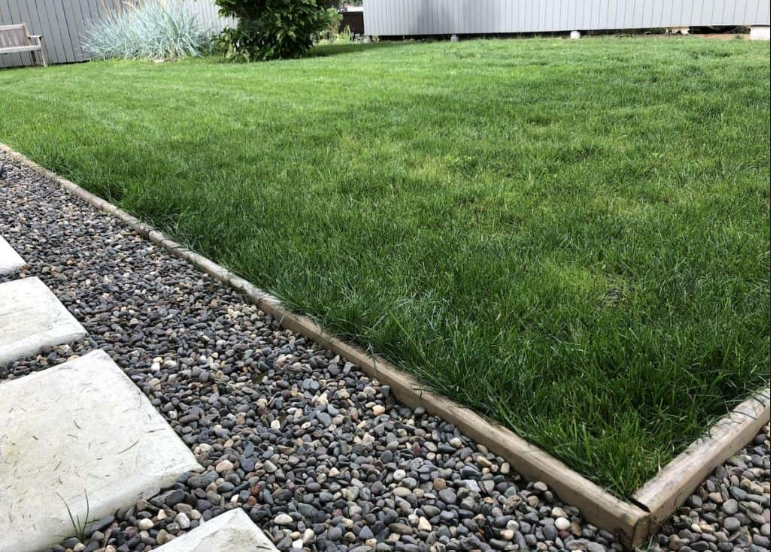
Looking for top quality landscape fabric installation in Calgary
- What to use nonwoven or woven landscape fabric?
When deciding between woven and nonwoven landscape fabric, it's essential to consider your project's requirements. Nonwoven geotextiles emerge as the superior option when permeability and soil separation are paramount. They excel particularly in projects necessitating drainage solutions. Although not as robust as woven geotextiles, nonwoven variants are ideal for targeted applications where strength is not the primary concern. - What is the difference between 5 oz and 3.2 oz landscape fabric?
The 3.2oz is referred to as ground cover and the 5oz is referred to as a weed barrier. - Should you put plastic under gravel?
NO, you should not put plastic under gravel.
If you allow leaves and other organic litter to accumulate in the gravel, weeds will grow in the debris above the landscape fabric. Should we put plastic down before gravel? Depends on the application. Plastic does work for a short while under a landscaped gravel bed but fabric is better. - Calgary Expertise: We understand the unique challenges Calgary's weather presents for decks.
- Free Consultations: Get a free assessment and no-obligation quote for your deck repair project.
How do you prepare ground before laying gravel?
- Compact the ground thoroughly as compaction is crucial for stability and longevity.
- Once grading is completed and the soil is compacted, consider using non-woven drainage landscape fabric.
- Lay the landscape fabric over the prepared surface to allow water to pass through while preventing weed growth.
- Ensure that the fabric is installed in such a way that water can flow freely through the rocks and into the lowest graded area, ensuring proper drainage for your project's success.
Choose A Green Future for all your landscaping fabric installation need needs and experience the benefits of working with the best in the business.
What materials are used to make landscape fabric?
Landscape fabric can be crafted from various materials such as linen, polyester, or recycled plastic. Typically, it is a woven cloth laid in garden beds to inhibit weed growth.
Benefits of Landscape Fabric Calgary

Landscape fabric comes in various materials like linen, polyester, or even recycled plastic. This woven cloth is laid in garden beds to effectively block sunlight and prevent weed growth
What are the advantages and disadvantages of landscape fabric?
Pros:
- Weed prevention: Landscape fabric obstructs sunlight from reaching weed seeds, effectively reducing or eliminating weed growth.
- Cost-effective: With a lifespan of several years, landscape fabric eliminates the need for frequent purchases of weed control solutions.
- Environmentally friendly: By reducing reliance on harsh weed control chemicals and incorporating recycled materials, landscape fabric contributes to environmental sustainability.
- Water permeability: Unlike plastic alternatives, landscape fabric features tiny perforations that allow water to reach plant roots, ensuring proper hydration.
- Moisture conservation: Landscape fabric diminishes surface evaporation, thereby reducing the frequency of watering.
Cons:
- Inflexibility: Landscape fabric loses effectiveness each time it is penetrated, making it impractical for gardeners who frequently alter their garden layouts.
- Reduced nutrient availability: Organic mulches cannot reach the soil beneath the fabric, depriving plants of natural nutrients.
- Hindered soil ecosystem: Landscape fabric inhibits the movement of soil-mixing organisms like earthworms and beneficial fungi, limiting organic material decomposition and nutrient cycling.
- Diminished effectiveness over time: Prolonged use of landscape fabric can lead to soil compaction, hindering air and water circulation to plant roots.
- Imperfect barrier: Plant roots may penetrate the fabric in search of air and water, compromising its weed-prevention capabilities.
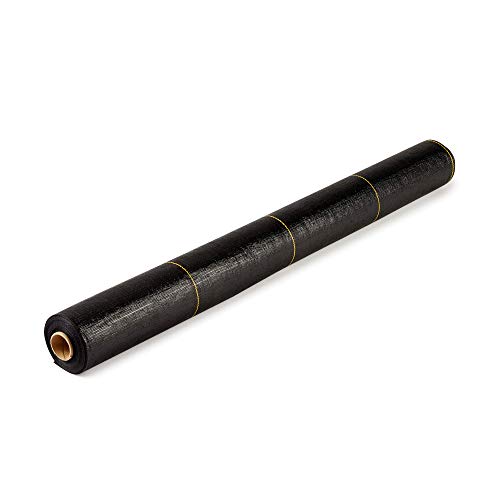
Landscape fabric offers weed control, reduces watering needs, and is eco-friendly with permeable options. However, it limits nutrient flow, disrupts soil health, and loses effectiveness over time.
Good Landscape Fabric vs Bad Landscape Fabric
Buy Landscape Fabric Calgary
The less effective, or what could be termed as "bad" landscape fabric, is commonly found in garden centers. It typically appears as a thin, soft, black cloth - the kind most people associate with landscape fabric. Despite being synthetic, this type of landscape fabric often proves messy and unsuitable for high-traffic areas. Over time, it tends to degrade, forming a clumpy, unmanageable mass beneath layers of mulch
Buy GOOD Landscape Fabric Calgary
On the other hand, the more effective "good" landscape fabric is typically marketed as agricultural landscape fabric and is constructed from heavy-duty woven plastic. Composed of interwoven plastic strands, this fabric boasts water permeability and breathability. It stands out as the superior choice for various applications, whether it's weed control, gravel driveways, eliminating grass, or preparing planting areas. Its exceptional effectiveness and longevity make it a preferred option when properly maintained.
List of Uses for Landscape Fabric
We hope this comprehensive list will help you determine whether landscape fabric suits your needs, and that you opt for the best quality fabric available in CALGARY
- Kill and Prevent Weeds in Planting Beds: Utilize landscape fabric on perennial planting beds to effectively suppress weeds indefinitely. For annual planting beds, use landscape fabric and remove it at the end of each season.
- Create a Pathway Through Your Yard or Garden: Lay 3-ft wide landscape fabric directly on top of grass and cover it with gravel, woodchips, or mulch to establish easy, weed-free pathways in your yard.
- Use Landscape Fabric Underneath Gravel in Driveways: Opt for heavy-duty commercial-grade landscape fabric to lay on your driveway, preventing weed growth underneath gravel. If using rocks or gravel with sharp edges, consider laying two layers of landscape fabric to prevent punctures. The fabric's water permeability ensures proper drainage even with multiple layers.
- Kill Grass and Smother Weedy Areas Before Planting: Pin landscape fabric down on parts of your lawn to eliminate existing growth, except for invasive perennial weeds. While silage tarps are more effective, landscape fabric can serve this purpose if available.
- Line a Drainage Ditch or French Drain with Landscape Fabric: Keep your French drain or drainage ditch clean and weed-free by lining it with landscape fabric.
- Wrap Drain Tile in Landscape Fabric: When installing drain tile (perforated plastic piping for excess water movement), wrap the pipe in landscape fabric to prevent soil from clogging the drainage holes.
- Line Planters and Raised Beds to Prevent Soil Leakage: Use landscape fabric as a liner for pots, planters, and the bottom and sides of raised garden beds to prevent soil leakage.
Beyond Weed Control: The Many Uses of Landscape Fabric
Landscape fabric isn't just for weed suppression! Explore its versatility for pathways, gravel driveways, weed control before planting, lining drainage systems, and raised garden beds. Discover its many benefits for your Calgary landscaping project.
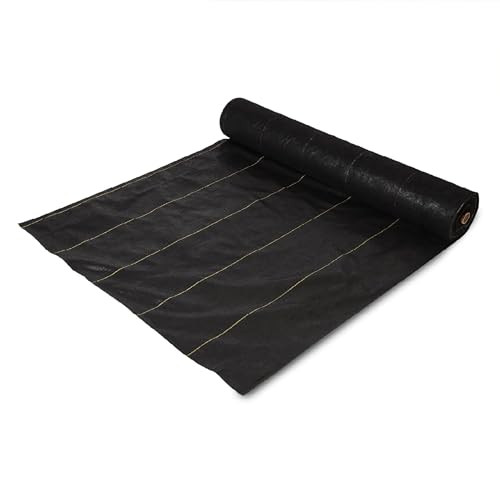
Landscape Fabric: A Multipurpose Tool
This versatile fabric goes beyond weed control! Use it for pathways, under gravel driveways, to smother weeds before planting, and even line drainage ditches and raised garden beds. Find the perfect application for your Calgary landscaping project.
Want a more accurate estimate? Contact A Green Future today for a free consultation!
landscape fabric, Calgary, weed suppression, water permeability, longevity, Calgary landscaping projects, garden bed prep, weed mat Calgary, weed control alternative Calgary, DIY garden Calgary, gravel driveway stabilizer Calgary, French drain filter fabric Calgary, raised garden bed weed control Calgary, organic gardening Calgary, durable landscape fabric Calgary
